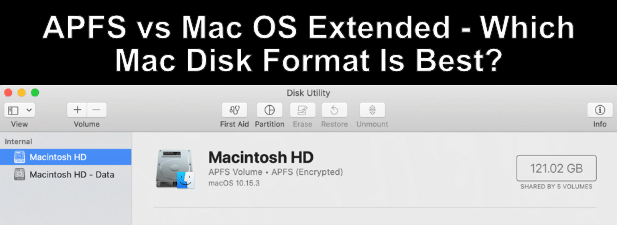

These are guidelines only, and there are downloads that allow Windows, MacOS and Linux to read unsupported file systems.Īll of Logotech's customizable flash drives are available in any format, and many are available in USB 3.0. Please tell your account manager if you need a specific file management system.

If you are not sure which format you need, check with your equipment vendor. However, you may be running equipment that calls for a specialized file format. We suggest exFAT as an option if individual files are massive. What is the difference between file systems for the end user?įAT32 works across the largest spectrum of file sizes and for the most common computer systems.
HFS FILE SYSTEM FILE SIZE LIMIT WINDOWS
Windows 7/8/10 can read/write only with third-party software, and it does not work with MacOS.ĮXT 2 and 3 have a 16GB individual file size limit.
HFS FILE SYSTEM FILE SIZE LIMIT MAC
With both Mac file systems, the individual file size limit is greater than commercially available drives.ĮXT (Extended File System) was created specifically for the Linux kernel so read/write is available. It only allows read/write in that and newer MacOS versions. It was released with iOS 10.3 and macOS 10.13. In Ubuntu Linux, it will also allow read and write.ĪPFS (Apple File System) was developed as a replacement for HFS+. It works with MacOS (10.6.4 and earlier, 10.6.5 and later), does not allow for read/write on Windows XP, and you need Boot Camp for it to work in Windows 7/8/10. HFS+ (Hierarchical File System) is default the file system for modern macOS versions. The individual file size limit is greater than commercially available drives. The New Technology File System (NTFS) is used by modern Windows versions by default, so it will read/write for Windows XP and Windows 7/8/10, as well as for Ubuntu Linux. It has a maximum volume size of 4GB, and a maximum file size of 2GB. It will read/write for Window, Mac and Linux. FAT16 was originally made for floppy disks and was the routine format for the earliest removable memory, including flash drives and SD cards. The 16 means it was for a 16-bit file system. There are other, more platform-specific formats file systems available that users may want for their computing needs.įAT16 (File Allocation Table) was first know as just FAT and goes back to the 1970s. Check your system's user guide for its required formats, including SuperSpeed USB 3.0. The read/write function is available to:īoth FAT32 and exFAT may be read only with Xbox and PlayStation gaming systems. As a format, it is optimized for flash drives. and later)įor exFAT, the file size limit is greater than any commercially available flash drive. The read/write function is available to most systems, including: It is the most common, and the default for flash drives. Here are the basic differences between the two:įAT32 has an individual file size limit of less than 4GBs. There are reasons one of these two most common formats should be your default file format.

We suggest either the FAT32 or the exFAT file systems for most thumb drives. Called the firmware, it also takes up some of the flash drive's memory. There are common file systems formatted for flash drives to work with. If it isn't written in a format the system recognizes, it just will not work. File systems translate physical recordings on a disk to the format read by the computer system. What do you need to know about file systems when choosing a flash drive?Ī file system is how data is organized on a disk. They need their thumb drives to work across devices. Today, many families or even individuals have all of these platforms in their homes and offices. It shouldn't matter if you are an Apple/iPhone devotee, or only use PCs and Androids. You want it to have a file system that can be read by whichever computer or machinery it is connected to. When you use a flash drive, you just expect it to work in your computer. Most people who use flash drives regularly are unaware of the differences between file systems used by different computer makers. exFAT can be used where NTFS is not a feasible solution, but a greater file-size limit than the standard FAT32 file system is required. exFAT is proprietary, and Microsoft owns patents onseveral elements of its design.


 0 kommentar(er)
0 kommentar(er)
